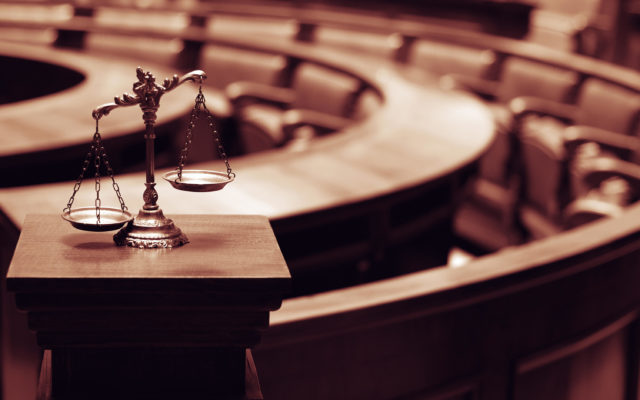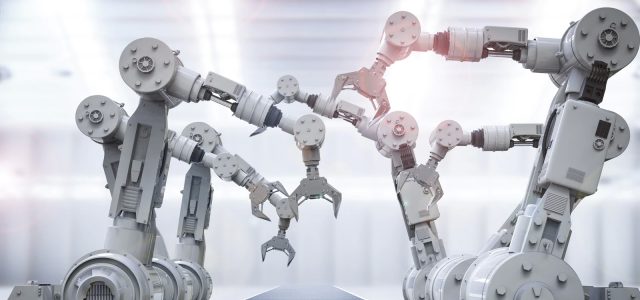While covering the rapid rise in the use of Artificial Intelligence (AI) and Machine Learning (ML) during the past few years, I have had the privilege of monitoring its implementation in numerous sectors. As part of my current series of interviews with the RELX Group, I been able to see the use of analytics from Artificial Intelligence in the legal industry.
The legal sector has a lot of data to work with which makes it ideal for the implementation of AI and ML. To understand how these technologies are being deployed in the legal sector, I interviewed Jeff Reihl, CTO at LexisNexis. LexisNexis is one of the world’s leading providers of business, legal, and regulatory information. With offices in more than 40 countries, LexisNexis serves customers in 150 countries and is part of the RELX Group.
The Data Behind LexisNexis
According to Jeff, it is the data that they use that sets LexisNexis apart as one of the most authoritative data sources in the world. He started the interview by highlighting the scale and scope at which LexisNexis operates. As early as 1989, LexisNexis had reached the hallmark of 1 million users. By 1998, the number of users had risen to 50 million. These days, LexisNexis holds three petabytes of data and more than 65bn document, 150 times the size of Wikipedia and doubling every three years. The group ingests more than 1.3m documents daily from more than 55,000 data sources, generating 20 billion connections. Another key element he talked about was the quality of the data, which has been infused with more than 30 years of metadata, judicial annotations and editorial comments from legal experts.
All this speaks to RELX Group’s overall strategy we have written about before, namely: combining deep customer understanding, leading content and data sets and global technology platforms and then building sophisticated analytics to help customers make better decisions, get better results and be more productive.
An interesting point to note about legal systems is that they tend to be unique in all countries. Since each country has its own unique legal systems, data that are generated from these systems are unique as well. The major aim behind the efforts of LexisNexis is to have an attorney who can:
- Understand the value that is associated with a case by inputting the known facts. They can also access databases of legal documents and other legal opinions. All of this, before they agree to take a case.
- Access all information related to the case and the opposing counsel easily on their device.
- Avail themselves of powerful search features, where they can successfully search for case concepts from a vast array of legal documents.
- Use the data to anticipate and understand the patterns behind the behavior of other lawyers, judges, and opposing parties. The data can also be used to develop and test successful strategies before even entering the courtroom.
- Availing themselves of the services of a chatbot in a bid to enhance the domains of the research necessary for building a winning case. The company is currently testing chatbots with customers.
To achieve these objectives, LexisNexis is using advanced technology to automatically annotate and tag data, guided by expert attorneys and editors. Jeff explained that LexisNexis had been using numerous forms of AI and ML, even before they were considered “cool” by the market. Its use of the big data platform called “HPCC Systems”, short for High Performance Computing Cluster Systems, deployed across RELX Group is one of the reasons why the company is ahead of the rest of the industry.
The Use of AI at LexisNexis
Despite the confusion about how best to define AI, Jeff explains that LexisNexis uses advanced technology in numerous ways:
- Machine Learning: Helps analysts look at seemingly large amounts of data to identify any visible patterns and take actions accordingly.
- Natural Language Processing: Helps the IT systems present within the LexisNexis infrastructure to process all forms of human speech, regardless of whether they are written or spoken, without requiring any changes. It helps the system identify all key phrases that are important for more relevant and overall better search results.
- Deep Learning: It can be characterized as a combination of techniques that employ multiple layers of artificial neural networks.
- Advanced Interfaces: This function largely improves the functionalities for all input/output search queries and presentations.
LexisNexis has used these technologies to develop numerous innovations aimed at improving the practice of law across the world and to ensure that lawyers can easily focus on delivering high quality work.
To develop its AI expertise, LexisNexis has:
- Invested around $1.2 billion over the past decade in technology to streamline development and to improve performance for a broader view of all customers.
- Opened technology centers of excellence in Raleigh, North Carolina, London, and Shanghai.
- Forged links with leading universities. These include an advanced user experience lab at North Carolina State University; partnering with Stanford’s CODEX to foster legal technology start-ups; and working with Cornell to provide the technology for its Master of Law program.
- Launched a Silicon Valley Legal Tech Accelerator, to give start-ups a leg up in the rapidly expanding legal tech industry.
Delivering the Most Concise Answer
Jeff Reihl gave one example of how AI has been deployed at LexisNexis through its new product, Lexis Answers. The product offers a better starting point for legal research.
Jeff explains that users sometimes just have a question like a legal definition, or points of law on a legal topic instead of looking for a number of search results from a query. Lexis Answers will directly answer their question and then provide additional search results if the user needs more details.
Key Acquisitions
In developing its AI capabilities, LexisNexis obviously has in-house expertise, but has also executed some striking acquisitions during the last few years. In 2015, it bought Lex Machina. The business, based in Silicon Valley, is a spin-out from Stanford University and had developed an award winning Legal Analytics platform specializing in patent law. It helps law firms and corporate legal departments assess how best to protect intellectual property in courts. LexisNexis has since used the platform for other practice areas.
Intelligize is another company that was acquired by LexisNexis in 2016. The business provides the industry’s leading search and analytics tool for compliance and regulatory information.
Its most recent acquisition in 2017 was Ravel Law, a San Francisco-based group, that provides litigators with access to legal research, analytics and data visualization tools.
LexisNexis is integrating the capabilities of its acquisitions into its core product offerings to provide a comprehensive user experience. The aim of all LexisNexis’s AI tools is to turn data into knowledge, helping legal professionals leverage insights to formulate strategies, differentiate services, provide measurable value, win clients and win cases.
What the Future Holds
Jeff Reihl emphasized the fact that the team at LexisNexis is very excited regarding what the future holds. A few of their expectations from the future are:
- Improved data visualization and analytics through a thorough mapping of entity extraction and relationship mapping, between companies, law firms, attorneys and judges.
- Improved analytics and decision tools through the use of advanced AI technologies including deep learning
- Additional Personalization through learning the needs of all users based on their past history of legal research. This will provide improved and more authentic results.
Article by channel:
Everything you need to know about Digital Transformation
The best articles, news and events direct to your inbox









